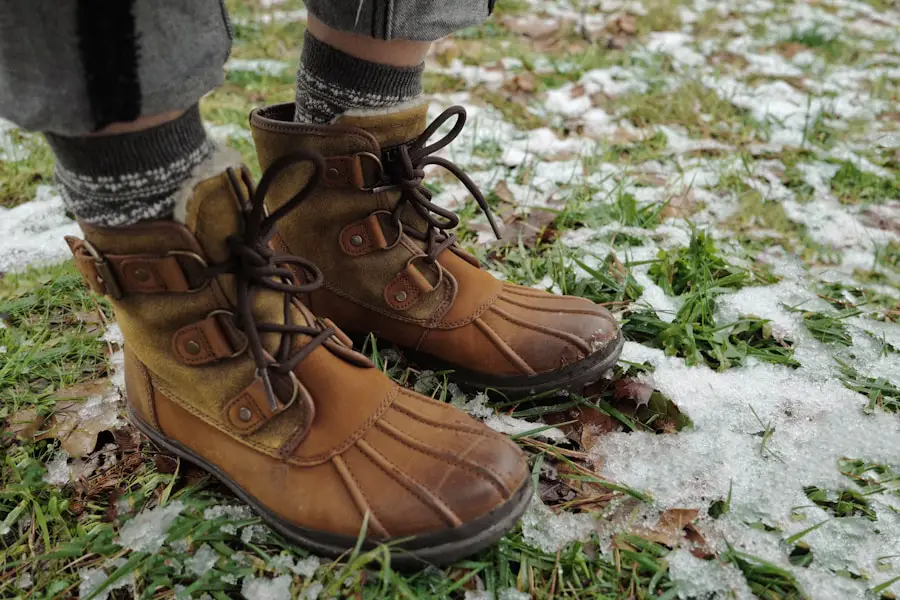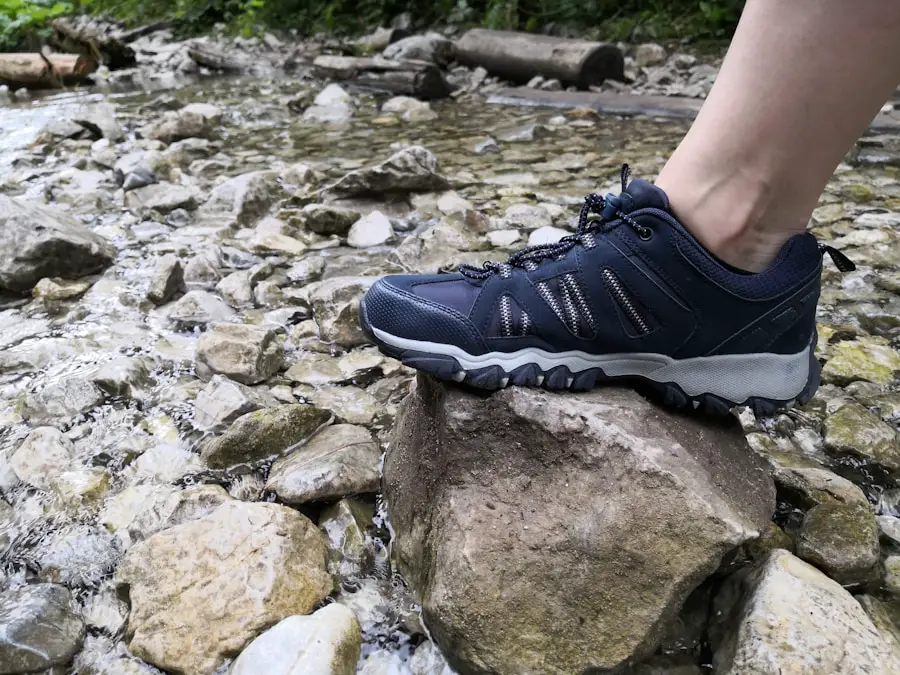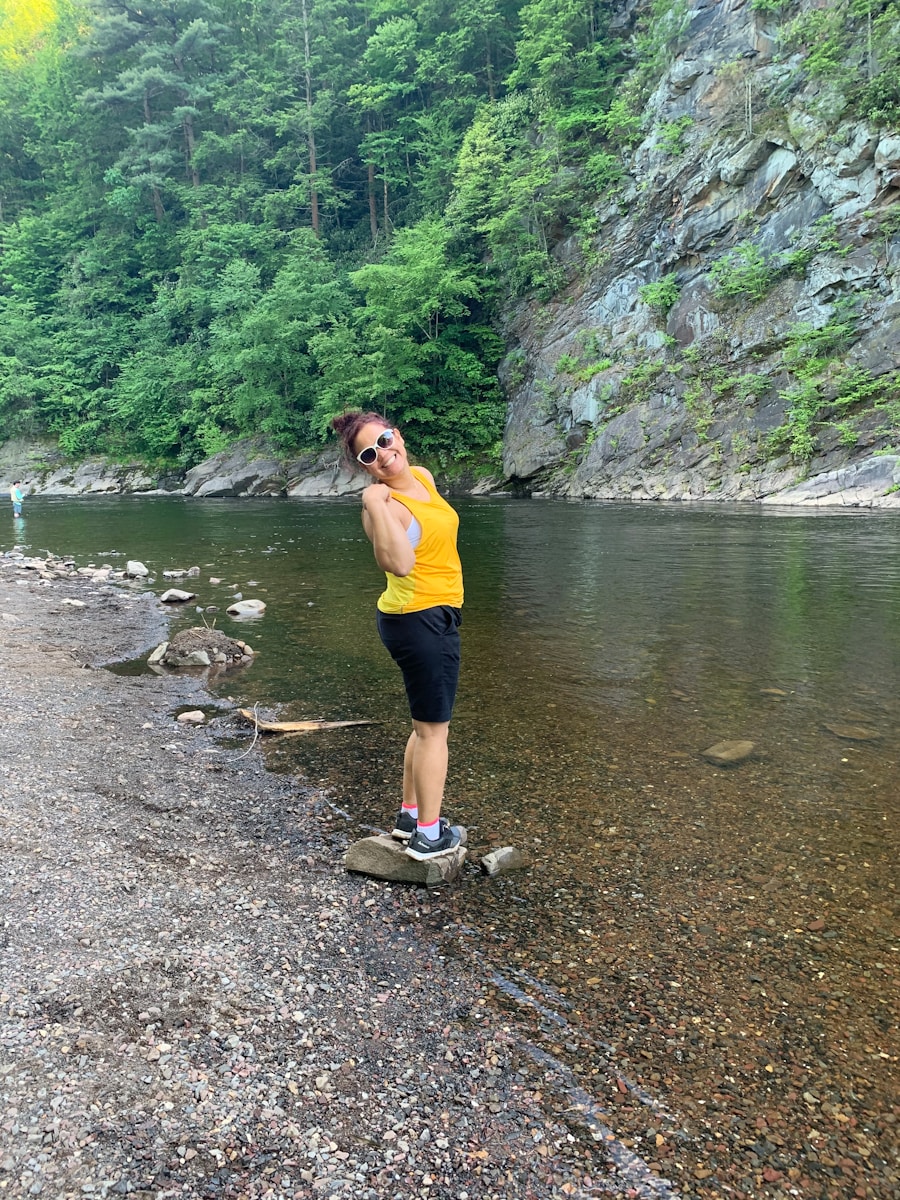When venturing into the great outdoors, the right gear can make all the difference in ensuring a safe and enjoyable experience. Among the essential items for any hiker, waterproof hiking boots stand out as a critical component. The primary function of these boots is to keep your feet dry, which is vital for comfort and health during long treks.
Wet feet can lead to blisters, fungal infections, and other discomforts that can quickly turn an enjoyable hike into a painful ordeal. Moreover, maintaining dry feet helps regulate body temperature, which is crucial in colder climates where wetness can lead to hypothermia. In addition to comfort and health, waterproof hiking boots provide a layer of protection against the elements.
Whether you’re traversing muddy trails, crossing streams, or hiking in rainy conditions, these boots are designed to shield your feet from moisture. This protective barrier not only enhances your overall hiking experience but also allows you to tackle diverse terrains with confidence. The psychological aspect of knowing your feet are protected can boost your morale on challenging hikes, enabling you to focus on the beauty of nature rather than the discomfort of wet socks.
Key Takeaways
- Waterproof hiking boots are important for keeping your feet dry and comfortable during outdoor activities.
- Signs of waterproof hiking boots include sealed seams, waterproof membranes, and water-resistant materials.
- You can test the waterproofness of your hiking boots by performing a water test and checking for any leaks.
- Maintenance and care for waterproof hiking boots include regular cleaning, reproofing, and proper storage.
- There are different types of waterproofing technology in hiking boots, such as Gore-Tex, eVent, and Dri-Tec.
Signs of Waterproof Hiking Boots
Identifying waterproof hiking boots can be straightforward if you know what to look for. One of the most telling signs is the presence of specific materials designed for water resistance. Many high-quality hiking boots utilize synthetic materials like Gore-Tex or proprietary waterproof membranes that prevent water from penetrating while allowing moisture from sweat to escape.
When shopping for boots, look for labels or descriptions that explicitly mention waterproof features, as this indicates a commitment to keeping your feet dry. Another sign of waterproof hiking boots is the construction method used in their design. Seam-sealed or welded seams are crucial indicators of waterproof capabilities.
Traditional stitching can create tiny holes that allow water to seep in, while sealed seams provide a more robust barrier against moisture. Additionally, the height of the boot can also play a role in its waterproof effectiveness; taller boots often provide better protection against water ingress from puddles or streams. A boot that extends above the ankle can help keep water out more effectively than a low-cut model.
Testing the Waterproofness of Your Hiking Boots

Before embarking on a long hike, it’s wise to test the waterproofness of your hiking boots to ensure they will perform as expected in wet conditions. One simple method involves submerging the boots in water for a short period. Fill a basin or tub with water and place the boots inside, ensuring that they are fully submerged up to the expected waterline during your hikes.
After about 30 minutes, remove them and check the interior for any signs of moisture. If your socks remain dry, you can be confident in their waterproof capabilities. Another effective way to test your boots is through a real-world scenario.
Take them out on a hike during light rain or on a trail with wet conditions. Pay attention to how your feet feel throughout the hike; if you notice any dampness or discomfort, it may indicate that the waterproofing is not functioning as intended. Additionally, consider testing them in various conditions over time, as wear and tear can affect their performance.
Regularly assessing their waterproofness will help you maintain confidence in your gear.
Maintenance and Care for Waterproof Hiking Boots
| Boot Care Task | Frequency |
|---|---|
| Clean off dirt and debris | After every hike |
| Apply waterproofing treatment | Every 3-4 months |
| Inspect for damage | Before and after each hike |
| Store in a cool, dry place | After each use |
Proper maintenance is essential for prolonging the life and effectiveness of your waterproof hiking boots. After each hike, it’s important to clean them thoroughly to remove dirt, mud, and debris that can compromise their waterproofing capabilities. Use a soft brush or cloth to wipe down the exterior and remove any caked-on dirt.
For deeper cleaning, consider using a specialized cleaner designed for hiking footwear, which can help maintain the integrity of the waterproof membrane. In addition to cleaning, regular treatment with a suitable waterproofing spray or wax can enhance the boots’ water resistance. Over time, exposure to elements can degrade the waterproofing treatment applied during manufacturing.
Applying a new layer of waterproofing product helps restore their protective qualities and ensures they remain effective against moisture. It’s advisable to follow the manufacturer’s instructions regarding application frequency and methods to avoid damaging the materials.
Types of Waterproofing Technology in Hiking Boots
The market offers various types of waterproofing technologies designed to keep hikers’ feet dry while providing breathability and comfort. One of the most recognized technologies is Gore-Tex, a membrane that is both waterproof and breathable. This technology allows sweat vapor to escape while preventing water from entering, making it ideal for strenuous hikes where moisture buildup can be an issue.
Many reputable brands incorporate Gore-Tex into their designs, ensuring high performance in wet conditions. Another popular option is eVent fabric, which operates on similar principles as Gore-Tex but boasts even higher breathability levels. This technology is particularly beneficial for those who engage in high-intensity activities where sweat management is crucial.
Additionally, some brands have developed proprietary waterproofing technologies that combine synthetic materials with innovative construction methods to create effective barriers against water while maintaining comfort and flexibility. Understanding these technologies can help hikers make informed decisions when selecting their footwear.
Choosing the Right Waterproof Hiking Boots for Your Needs

Selecting the right pair of waterproof hiking boots involves considering several factors tailored to your specific needs and preferences. First and foremost, assess the type of terrain you plan to hike on regularly. If you often navigate rocky trails or rugged landscapes, look for boots with sturdy soles and excellent traction features such as Vibram outsoles that provide grip on uneven surfaces.
Conversely, if your hikes are primarily on well-maintained paths, lighter-weight options may suffice. Fit is another critical aspect when choosing hiking boots. A proper fit ensures comfort during long hikes and minimizes the risk of blisters or foot fatigue.
When trying on boots, wear the socks you intend to use while hiking and walk around to gauge comfort levels. Pay attention to areas such as toe space and arch support; there should be enough room for your toes to wiggle without feeling cramped while providing adequate support for your arches. Additionally, consider whether you prefer high-cut or low-cut designs based on ankle support needs.
Common Misconceptions About Waterproof Hiking Boots
Despite their popularity, several misconceptions about waterproof hiking boots persist among outdoor enthusiasts. One common myth is that all waterproof boots are equally effective in all conditions. In reality, different models may perform better in specific environments due to variations in materials and construction techniques.
For instance, while some boots excel in wet climates, they may not be as effective in extremely hot conditions where breathability becomes paramount. Another misconception is that waterproof hiking boots require little to no maintenance once purchased. Many hikers assume that because their boots are labeled as waterproof, they will remain so indefinitely without care.
However, neglecting regular cleaning and reapplication of waterproofing treatments can lead to diminished performance over time. Understanding that maintenance is crucial for preserving their functionality will help hikers make informed decisions about their gear.
Alternatives to Waterproof Hiking Boots
While waterproof hiking boots are an excellent choice for many outdoor enthusiasts, they are not the only option available for those who enjoy hiking in wet conditions. Trail running shoes with water-resistant features can be a viable alternative for those seeking lightweight footwear that dries quickly after exposure to moisture. These shoes often provide excellent traction and breathability while being less bulky than traditional hiking boots.
Another alternative is using gaiters in conjunction with non-waterproof hiking shoes or boots. Gaiters are protective coverings worn over footwear that extend up the leg, providing an additional barrier against water and debris. This combination allows hikers to choose lighter footwear while still enjoying protection from wet conditions without sacrificing comfort or performance on dry trails.
Exploring these alternatives can help individuals find the best fit for their unique hiking style and preferences.
If you are planning a hiking trip, it is essential to have waterproof hiking boots to keep your feet dry and comfortable. However, if you are also looking for other travel essentials, you may want to check out this article on scarves with hidden pockets for travel. These scarves are not only stylish but also practical for storing small items while on the go. Additionally, you may also be interested in this article on softside carry-on luggage with wheels for added convenience during your spring adventures.
Love travel? Join Our Facebook Community For More Tips.
FAQs
What are hiking boots waterproof?
Hiking boots that are waterproof are designed to keep your feet dry and comfortable while hiking in wet conditions. They are typically made with waterproof materials such as Gore-Tex or eVent to prevent water from entering the boot.
How do waterproof hiking boots work?
Waterproof hiking boots work by using a waterproof membrane or treatment to prevent water from entering the boot. This allows hikers to stay dry and comfortable in wet conditions.
Are all hiking boots waterproof?
Not all hiking boots are waterproof. Some hiking boots are designed for breathability and may not be fully waterproof. It’s important to check the product specifications or labels to ensure that the boots are indeed waterproof.
What are the benefits of waterproof hiking boots?
The benefits of waterproof hiking boots include keeping your feet dry and comfortable in wet conditions, preventing blisters and discomfort, and providing better overall protection for your feet while hiking.
Can waterproof hiking boots be used in all weather conditions?
While waterproof hiking boots are designed to keep your feet dry in wet conditions, they may not be suitable for extremely hot or dry weather. It’s important to consider the specific weather conditions of your hiking trip and choose the appropriate footwear accordingly.
